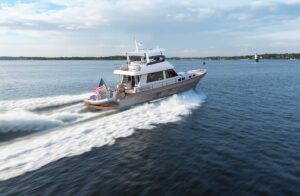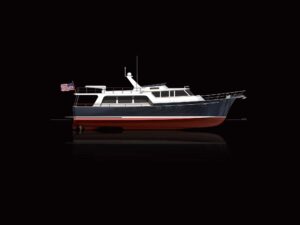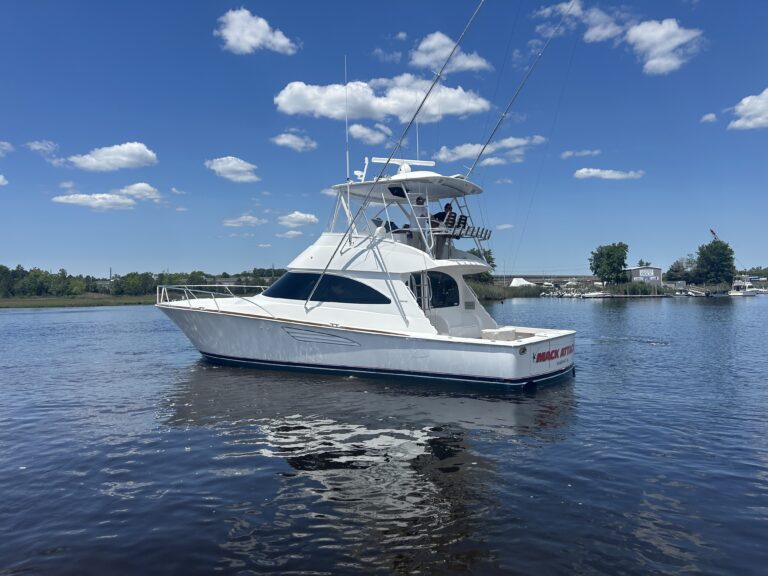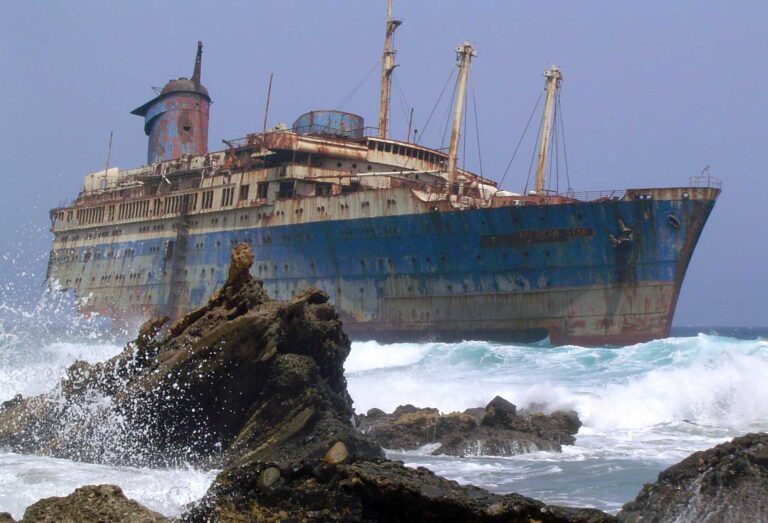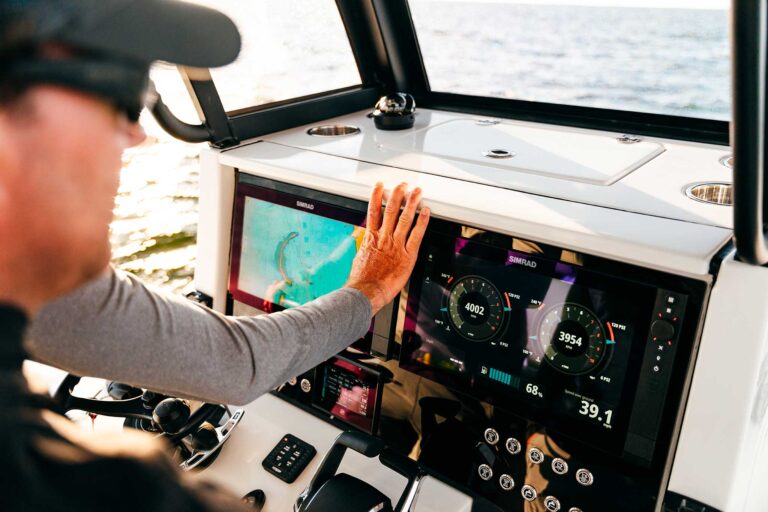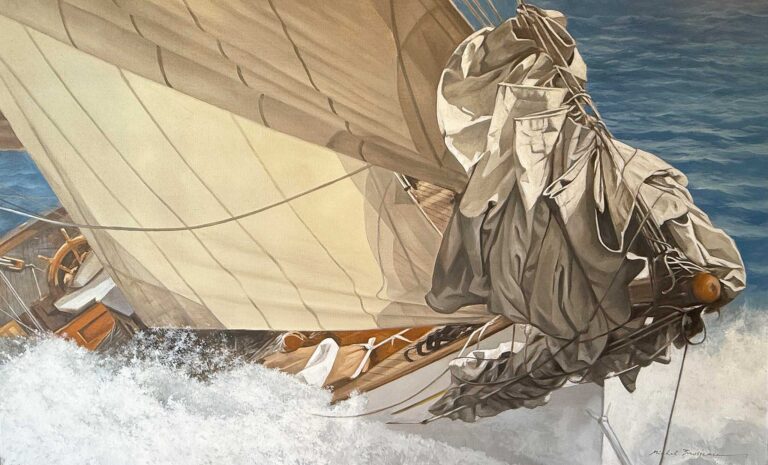
Dana and Martha Robes have done a ton of boating over the last 36 years—strong emphasis on the word ton—in a wide-ranging selection of sailboats and powerboats.
“Martha says I have a B.A.D. condition, her acronym for Boat Acquisition Disease,” Dana says. “We started boating in 1985 in a 17-foot O’Day Daysailer, which Martha gave me for a birthday present. I sailed it almost everyday that summer, and when we moved to Maine at the end of that season, I decided I wanted something a little larger, a boat that could handle the big water and tides.”
They bought a Cape Dory 28 and sailed it along the Maine coast. Two years after buying the Cape Dory, the Robes bought a Cambria 40—a Dave Walters design built by Cabo Rico—and began distance sailing offshore, destined for the Bahamas and islands in the Caribbean, including Antigua.
“After a couple of years of passagemaking under sail, we decided to leave the Cambria in the Bahamas at Green Turtle Key in the spring, so it would be there the following winter and we wouldn’t have to take it down. This meant we would be without a boat for the summer. So, at the Newport Boat Show that fall, we bought a cutter-rigged Little Harbor 48 that had been Ted Hood’s personal boat.”
From April 1993 to June 2000, the Robes made a circumnavigation of the world in the 48 and then returned to Maine. They decided to build a sailboat, a Hood design, at Lyman-Morse. The boat would incorporate all the ideas for improvements they visualized during their circumnavigation. That boat, a serious go-to-sea cruiser, weighed in at 120,000 pounds. (The Robes still own it.) The couple used the boat to head south again, but it was around this time that Dana and Martha began investigating “the dark side.” Powerboats.
“In 2009 we bought an Ellis Downeast cruiser that had good coastal cruising capabilities, but then we decided to look for something larger, a design that we really loved,” Dana said. “We visited the John Williams Boat Company after hearing that he had a Stanley 38 for sale. We liked it, but decided to hire his craftsmen to finish out an available hull the way we envisioned it. We could have all the storage and other amenities that were right for a cruising couple. We wanted all the redundancies and comforts we came to appreciate in our other cruisers, including multiple tanks, primary and backup pumps, comfort systems, bow and stern thrusters, and a well-equipped galley with Sub-Zero fridge and freezers.”
Christened Maisie McGoo, after their two dogs, the Stanley 38 could do 20 knots at wide-open throttle the first year. But then a cage was installed around the prop to prevent fouling lobster pots. After that, the boat cruised at 12 to 13 knots and topped out around 17 knots. However, that was fast enough for these two experienced sailors, who were happy knowing their running gear was protected.
“One of the reasons we liked the boat was that we could easily put it on a transport trailer and ship it long distances, rather than having to run it on its bottom,” Dana said. “We shipped it to Fernandina Beach, Florida, one year, and came north on the ICW to Maine. We hit some open water stretches, sometimes with seas up to five feet, but the powerful displacement hull with its deep-V entry never caused us to slow much.”
One season, they shipped the boat to Burlington, Vermont, and then headed for Quebec City in Canada. Another year found them launching the boat near Albany, New York, and heading west through the Erie Canal system to Oswego, then back east through the Thousand Islands.
But the B.A.D. has reared its head once more. The Robes are now selling Maisie McGoo for something larger, with good reasons. “Lately, we’ve realized we need two cabins, particularly at this time in our lives, with 17 grandchildren we want to remain close with. We purchased a 2013 Sabre 48 Salon Express. We just painted it a sea foam green, and we feel like kids again as we get it ready for the next adventure. We’re headed south in November. Can’t wait to see all the beauty of the ICW again.”
This article was originally published in the January 2022 issue.


